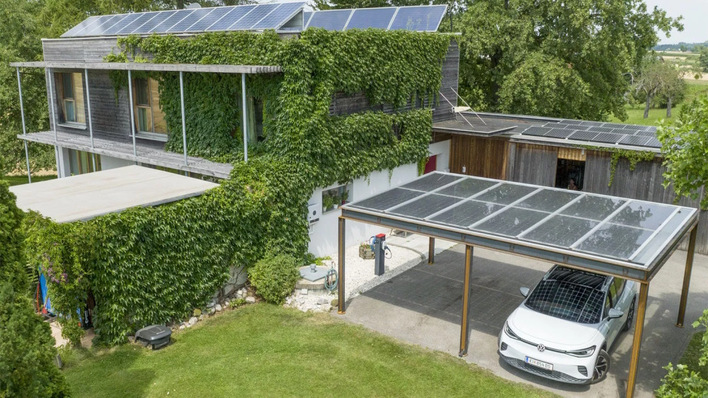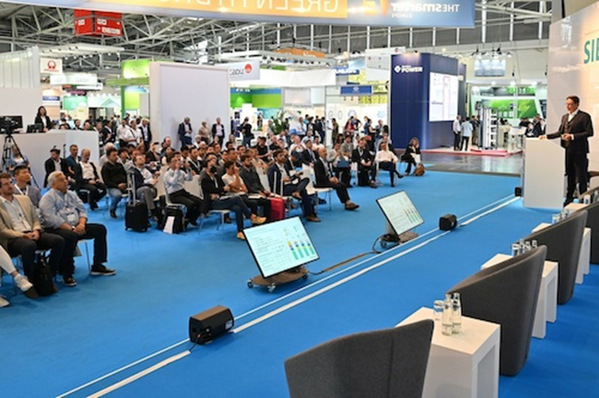Sustainable combined heat and power (CHP) – or cogeneration – is a key component of sector coupling and, in addition to other renewable systems, enables a clean and modern energy supply. With efficiency levels exceeding 90 percent and flexible applications for decentralized electricity and heat generation, it also serves to make the power grid more stable. In a recent episode of The smarter E podcast, Hans Korteweg, CEO of COGEN Europe – the European Association for the Promotion of Cogeneration – provides exciting insights into how this technology works. At the international energy exhibition EM-Power Europe, set to take place in Munich from June 9 to 11, 2021, the major players of the new energy world will present sustainable technologies such as cogeneration, integrated energy solutions and innovations in smart energy management.
Cogeneration refers to the combined generation of heat and power (CHP). With CHP, generation occurs close to the site of consumption, easing the burden on the power grids. Its high flexibility also ensures stable power generation, even when there is no wind or the sun is not shining. In contrast to conventional centralized and fossil-fueled steam power stations, production from CHP plants can be easily capped or the plants can be shut down entirely, if necessary. So, CHP technology fits perfectly in the existing infrastructure of electricity, heat and gas grids. Thanks to their flexibility and their optimal use of renewable energy, for instance in the form of biomethane, hydrogen or other synthetic fuels, CHP plants are well-suited to cover residual loads in the power grid. All of these factors make CHP plants an important element of the energy supply of the future and an ideal member of the renewable energy technology family.
Cost-effective and efficient with low emissions
COGEN Europe promotes the expansion of CHP across Europe. The association, an official partner of EM-Power Europe starting in 2021, advocates sector coupling and considers CHP to be the backbone of the future European energy system – carbon neutral, decentralized and resilient. “CHP has the potential to bring together the electricity, heat and gas grids. It efficiently integrates renewable energy and its use for decarbonized energy supply. CHP thus brings more reliability and flexibility to the energy system by being able to generate heat and electricity at all times. The combined generation of electricity and heat is more cost-effective, more efficient and also leads to lower emissions,” says CEO Hans Korteweg. As of January 14, 2021, the latest episode of The smarter E Podcast with Hans Korteweg is online and can be accessed here.
Using green hydrogen to store energy
CHP must be viewed in combination with renewable energies in sector-coupled, integrated solutions. Its potential can be seen in Power-to-Fuel technology, where excess renewable energy is converted to hydrogen or another type of synthetic fuel. This technology allows energy to be stored and transported cost-effectively. “With the stored fuel, thermal CHP plants produce electricity on days without wind or sunshine. These plants ensure stability by feeding additional electricity into the grid when needed. Thanks to Power-to-X technology, CHP plants will play an important role in the energy supply of the future,” explains Jan Andersson, Market Development Manager of the Finnish company Wärtsilä, which will be featured as an exhibitor at EM-Power Europe for the first time in 2021. As one of the leading energy system integrators, Wärtsilä has been commissioned to install numerous CHP plants in Germany, including the new CHP plant for the municipal utility company Kraftwerke Mainz-Wiesbaden (KMW), which has an output of more than 100 megawatts (MW). Wärtsilä’s gas motors make up the central element of the power plant. Once it is taken into operation, the CHP plant will serve as a reliable source of power for around 40,000 households in the Mainz-Wiesbaden region, outputting 100 MW of electrical power and around 90 MW of thermal power.
See also: Applications now open for international innovation prizes
Virtual power plants play an important part in providing control reserve from renewable energies such as biogas, Power-to-X and CHP plants, as Cologne’s Next Kraftwerke goes to show. “For example, CHP plants can help balance out fluctuations caused by volatile renewable energy by feeding power into the grid, producing either more or less electrical energy at short notice. To this end, we provide local forecasts of the generation of energy from renewable sources and the utilization level of the natural gas grid. Together with the operators, we then sell the flexibility offered by CHP plants on the electricity balancing market for a profit,” says Jochen Schwill, founder and CEO of Next Kraftwerke. Another exhibitor at the 2021 EM-Power Europe, Next Kraftwerke claims to operate one of the largest virtual power plants in the world with about 10,000 decentralized renewable generating plants, storage units and industrial consumers. In total, the virtual power plant has an aggregated output of over 8,500 MW.
CHP is hydrogen-ready
The key technologies for electrification and renewable energy production are consistently becoming more cost-effective and enable a transformation of our power supply towards a decentralized structure. This development is a much stronger driver for the decarbonization of the energy system than the time-consuming expansion of large infrastructures. CHP plants are increasingly being fueled by green hydrogen, and comprehensive sector coupling is being used to supply districts as climate-neutrally as possible. CHP is hydrogen-ready according to the latest reports from the Bundesverband Kraft-Wärme-Kopplung (B.KWK), Germany’s federal association for CHP systems. Operating plants with mixed gas containing a ten-percent hydrogen admixture is no problem for modern CHP plants. Pure hydrogen can be used in fuel cells and there are already some CHP plants which can run on 100 percent hydrogen.
Heat and electricity for domestic and district-wide use
More and more municipal utilities are turning to CHP for decentralized, more carbon-neutral heat and electricity generation to supply entire districts. The municipal utilities in the Bavarian town of Haßfurt are a prime example of how this works. In addition to PV and wind power, these utilities use an electrolyzer with 1.2 MW of electrical output to produce hydrogen. Specifically, excess wind energy is converted into combustible hydrogen gas via proton exchange membrane (PEM) electrolysis and is then fed into the local gas grid (five percent admixture) and sold all across Germany as ProWindgas (natural gas-wind gas-biogas mixture). A hydrogen-fueled CHP plant with an electrical output of up to 200 kilowatts (kW) can reconvert the hydrogen into electricity.
EM-Power Europe 2021
CHP technology is a prerequisite for Europe to become carbon-neutral by 2050. This technology will share the spotlight at EM-Power Europe with general sector coupling for buildings and districts as well as the efficient distribution and use of electricity and heat generated from renewable sources of energy. Exhibitors at the international exhibition for energy management and integrated energy solutions will be presenting their technological solutions and services for a future-oriented energy supply. The energy exhibition is part of the innovation hub The smarter E Europe, which stands for decentralization, digitalization and sector coupling and campaigns for the promising, sustainable supply of energy from renewable sources. (mfo)







